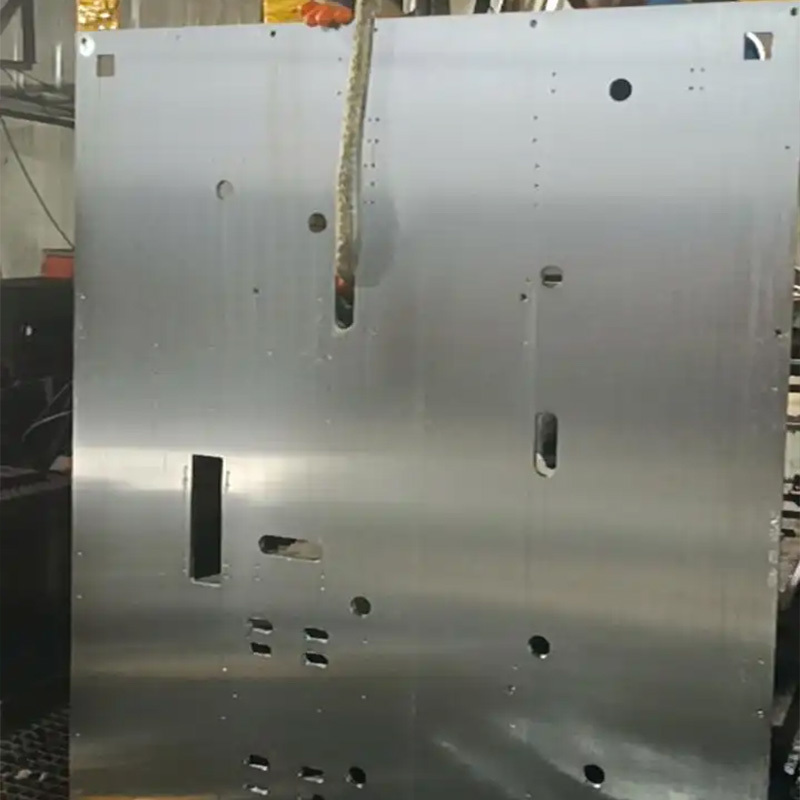Products
Contact Us
Service Hotline:86-531-8362-5098
Contact Person:86-138-6410-3626(Manager Yu)
Contact Person:86-139-6401-6387(Manager Meng)
Contact Person:86-186-7839-3927(Manager Yu Yang)
E-mail:13964016387@163.com(Manager Meng)
E-mail:longshan879@sina.com(Manager Yu)
Address: No. 12107, Longquan Road, Zaoyuan Street, Zhangqiu District, Jinan City
Hard chrome machine tool module group
Keywords:
Detailed Description
Under certain conditions, the deposited chromium plating has high hardness and wear resistance. The Vickers hardness of hard chromium reaches 6512MPa~10170MPa. Chromium is the hardest plating among commonly used platings, which can improve the wear resistance of parts and prolong their service life. Examples include tools, molds, jigs, fixtures; machine tools, excavator, car, and tractor main shafts; cutting tools, etc., all of which can be hard chrome plated. Hard chrome plating can be used to repair the dimensional tolerances of worn parts. By strictly controlling the chrome plating process and accurately plating according to the specified dimensions, the process is called dimensional chrome plating if no further machining is required after plating.
Process flow: workpiece - degreasing - pickling - washing - electroplating - washing - inspection and packaging.
Process data: Thickness depends on customer requirements, generally 3-50um.
Special requirements for hydrogen removal:
When hydrogen removal is needed after hard chrome plating, it can be done by immersing in hot oil at 180℃~200℃ or in an oven at the same temperature for 2h~3h. When the ultimate tensile strength of the plated material is greater than 1373MFa, stress relief is required before electroplating, pickling is strictly prohibited, and hydrogen removal should be performed immediately 1h after electroplating. The hydrogen removal time is required to be more than 23h, followed by a notched sustained tensile hydrogen embrittlement test, which must be passed before use.
Zinc-nickel alloy:
Zinc-nickel alloy is an anticorrosion plating that has attracted widespread attention since the 1980s. The importance of zinc alloy lies in its valuable physicochemical properties:
① Excellent corrosion resistance. A zinc alloy layer containing 7%~9% nickel has 3~5 times higher corrosion resistance than a zinc layer of the same thickness; an alloy layer containing 10%~16% (optimally 13%) is 6~10 times higher than zinc, and also superior to titanium alloy. When the nickel content is greater than 15%, zinc-nickel alloy is still an anodic plating for steel. Compared with zinc plating, the potential difference with iron is reduced, so the corrosion rate is low; in addition, the zinc alloy with 10%~16% nickel content has a single-phase "α" structure. This stable single-phase structure is one of the reasons for its high corrosion resistance.
② Excellent mechanical properties. After plating, it does not change the yield strength, tensile strength, and elongation of the steel, and has good plasticity. In the torsion-tension test, it is comparable to the plating layer, and the notched tensile test has satisfactory low hydrogen embrittlement, making it an ideal alternative plating layer in aerospace.
③ Excellent solderability. It is easy to solder under various conditions, and there are no defects such as long whiskers (long hairs).
④ Small plating stress, suitable for electroplating on high-strength steel, can be used as an alternative plating layer, and is mostly used in military product production. In addition, the zinc alloy electroplating solution has good dispersibility and covering power, does not require highly toxic oxide systems, has high current efficiency, and the plating layer is bright and smooth. The electroplating industry commonly uses alloys with less than 15% nickel, which have good corrosion resistance and are easy to chrome plate, and can also be passivated. Zinc layers with high nickel content are difficult to chrome plate and passivate, and excessive nickel content reduces corrosion resistance.
Zinc-nickel alloy plating solutions include chloride-type, sulfate-type, and alkaline zincate-type.
Process flow: workpiece - degreasing - pickling - washing - electroplating - washing - passivation - washing - inspection and packaging
Get a free quote
Please fill in your contact information and your needs, and we will arrange a professional to contact you!





